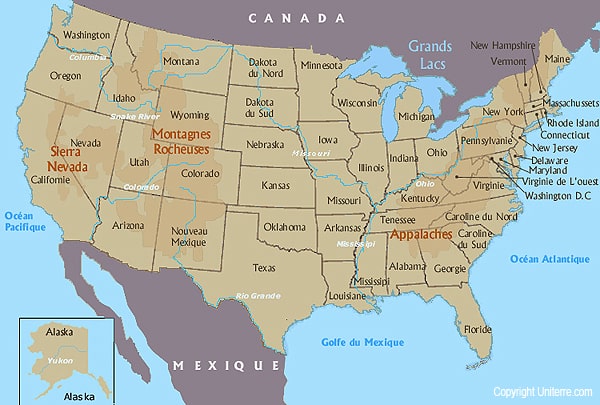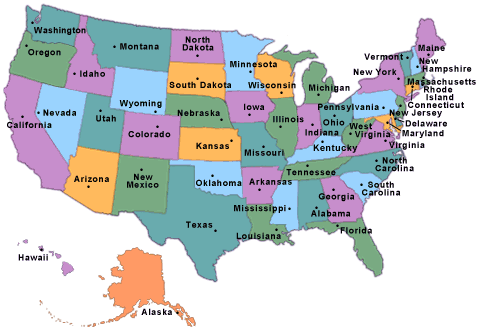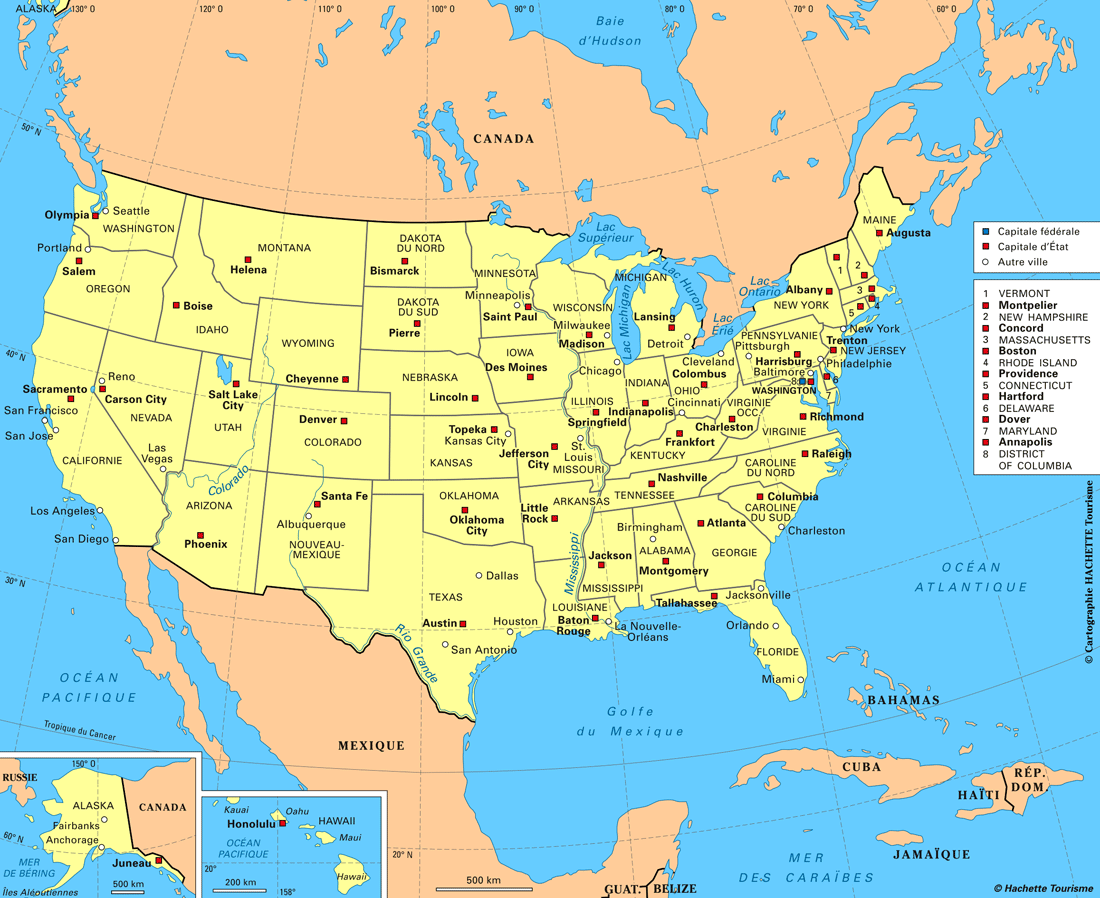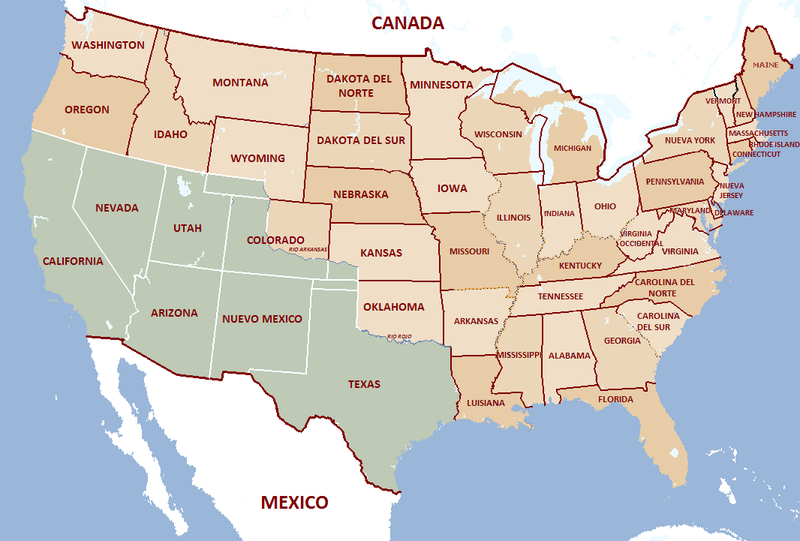The Place des États-Unis (United States Plaza) is a public space in the 16th arrondissement of Paris, France, about a half-kilometre south of the Place de l'Etoile and the Arc de Triomphe.
Other streets entering the Place des États-Unis include: the Rue de l'Amiral d'Estaing, which enters from the south; the Rue Galilée, which transits the western end of Square Thomas Jefferson; and the Rue Dumont d'Urville which enters the northwestern corner.
The area around the Place des États-Unis was created by the destruction of the old Passy water reservoirs. (They were reconstructed in 1866 on higher ground, in the triangle formed by three streets: Lauriston, Paul Valéry, and Copernic, about two hundred metres to the west-northwest.) The Place des États-Unis was originally called Place de Bitche to honor a village in the Moselle department in northeastern France that valiantly resisted a Prussian invasion during the Franco-Prussian War of 1870.
The square's name was changed when Levi P. Morton, the American ambassador, saw fit, in 1881, to establish his residence and his country's embassy there after abandoning unsuitable offices a few blocks away at 95, Rue de Chaillot. The similarity between the name of the Moselle village (Bitche) and the slightly off-color English word, bitch, made the Americans uncomfortable, so the chargé d'affaires prevailed upon the préfet for the Seine department to change the name to something less risible. The French official arranged for the name, Place de Bitche, to be transferred to another site in the 19th arrondissement, near the Pont de Crimée, and rechristened the square outside Mr. Morton's legation, Place des États-Unis.
On 13 May 1885, a bronze model of the Statue of Liberty by Frédéric Bartholdi was erected in the center of the Place des États-Unis, directly in front of the American diplomatic mission. Purchased by the Committee of Americans in Paris and offered to the City of Paris, the model was a fund-raising tool, displayed with the aim of inspiring support for the building of the full-sized statue and its transport across the Atlantic. The model remained in place until 1888.
Famed publisher, Joseph Pulitzer (1847–1911), impressed by the work Bartholdi had done in executing the Statue of Liberty, commissioned him to produce another statue, one emblematic of the French-American friendship. The subject matter, General George Washington and Gilbert du Motier, marquis de Lafayette, comrades-in-arms during the American Revolutionary War, was an easy choice. The sculptor designed the bronze statue, which depicts Washington and Lafayette on a marble plinth, clothed in military uniforms, shaking hands; the French and American flags serve as a backdrop. Dedicated in 1895, the statue was installed in the Place des États-Unis. A few years later, Charles Broadway Rouss, the New York City department-store tycoon, purchased an exact replica of the Washington-and-Lafayette statue which he donated to the people of New York City for placement in Morningside Park in the Morningside Heights neighborhood of Manhattan.
The Place des États-Unis (Square Thomas Jefferson) is the site of a monument to the American dentist, Horace Wells (1815–1848), who was a pioneer in the use of anesthesia. The monument was dedicated on 27 March 1910 during the tenth session of the FDI World Dental Federation, which was then known as the Fédération dentaire internationale. On the right side of the base of the monument, the sculptor, René Bertrand-Boutée, incised the medallion of the physiologist, Paul Bert, who was also an early experimenter in anaesthetics, respiration, and asphyxia. On 4 July 1923, the President of the French Council of State, Raymond Poincaré, dedicated a monument in the Place des États-Unis to the Americans who had volunteered to fight in World War I in the service of France. The monument, in the form of a bronze statue on a plinth, executed by Jean Boucher (1870–1939), had been financed through a public subscription. Boucher had used a photograph of the soldier and poet, Alan Seeger, as his inspiration, and Seeger's name can be found, among those of twenty-three others who had fallen in the ranks of the French Foreign Legion, on the back of the plinth. Also, on either side of the base of the statue, are two excerpts from Seeger's "Ode in Memory of the American Volunteers Fallen for France", a poem written shortly before his death on 4 July 1916. Seeger intended that his words should be read in Paris on 30 May of that year, at an observance of the American holiday, Decoration Day (later known as Memorial Day): They did not pursue worldly rewards; they wanted nothing more than to live without regret, brothers pledged to the honor implicit in living one's own life and dying one's own death. Hail, brothers! Goodbye to you, the exalted dead! To you, we owe two debts of gratitude forever: the glory of having died for France, and the homage due to you in our memories.
Other streets entering the Place des États-Unis include: the Rue de l'Amiral d'Estaing, which enters from the south; the Rue Galilée, which transits the western end of Square Thomas Jefferson; and the Rue Dumont d'Urville which enters the northwestern corner.
The area around the Place des États-Unis was created by the destruction of the old Passy water reservoirs. (They were reconstructed in 1866 on higher ground, in the triangle formed by three streets: Lauriston, Paul Valéry, and Copernic, about two hundred metres to the west-northwest.) The Place des États-Unis was originally called Place de Bitche to honor a village in the Moselle department in northeastern France that valiantly resisted a Prussian invasion during the Franco-Prussian War of 1870.
 Carte de États-Unis images |  of the West in the USA |  ETATS UNIS |  Carte des Etats-Unis avec les |  Carte des Etats Unis |
 les États-Unis d\x26#39;Amérique, |  séjour aux États-Unis, les |  Plan États-Unis : cliquez sur |  que les États américains | etats unis. |
Famed publisher, Joseph Pulitzer (1847–1911), impressed by the work Bartholdi had done in executing the Statue of Liberty, commissioned him to produce another statue, one emblematic of the French-American friendship. The subject matter, General George Washington and Gilbert du Motier, marquis de Lafayette, comrades-in-arms during the American Revolutionary War, was an easy choice. The sculptor designed the bronze statue, which depicts Washington and Lafayette on a marble plinth, clothed in military uniforms, shaking hands; the French and American flags serve as a backdrop. Dedicated in 1895, the statue was installed in the Place des États-Unis. A few years later, Charles Broadway Rouss, the New York City department-store tycoon, purchased an exact replica of the Washington-and-Lafayette statue which he donated to the people of New York City for placement in Morningside Park in the Morningside Heights neighborhood of Manhattan.
 Si les Etats-Unis ont |  Les Etats-Unis décrivent leur |  Les Etats-Unis d\x26#39;Amérique: |  Carte de États-Unis images |  Carte de États-Unis images |
 Carte des Etats-Unis. |  LES ETATS-UNIS |  Carte des Etats-Unis. |  annexés par les Etats Unis |  Anglonautes \x26gt; Maps \x26gt; USA |
No comments:
Post a Comment